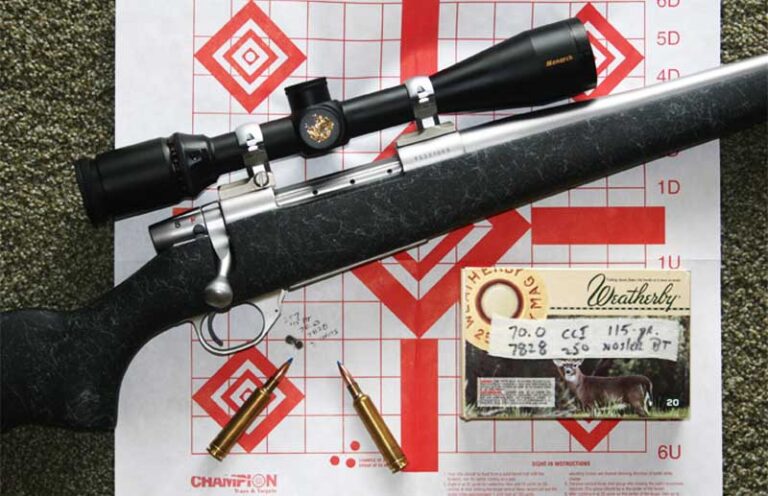
The author takes a closer look at .257 Weatherby Magnum, a darling of long-range hunters everywhere and the favorite cartridge of the man who invented it.
Mention the .257 Weatherby Magnum and I think of a hunting cartridge that has plenty of reach and power. A caliber that shoots so flat you can hold dead-on at target out to 300 yards. It is an easy cartridge to shoot long range and it is just as suited for shooting gophers and coyotes, as it is for white-tails, speed goats, and muleys. Larger game, too, if you are a dead-eye.
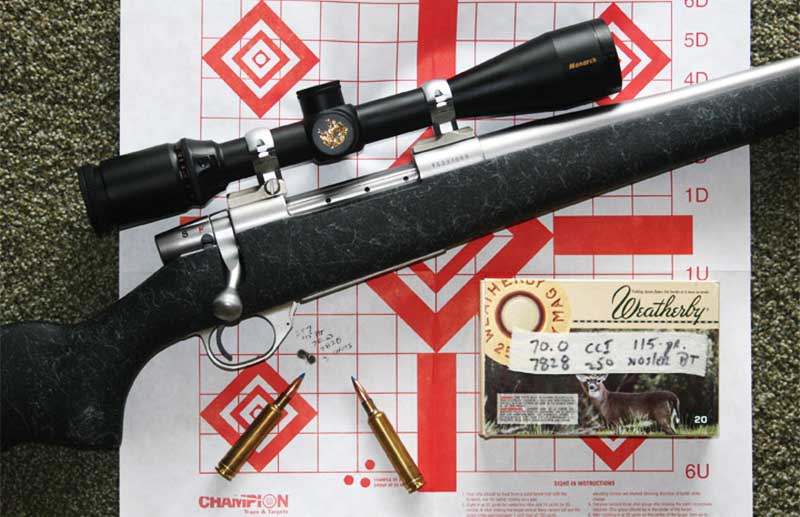
The bonus with this cartridge is that the recoil won’t jolt your shoulder out of the socket. It is an older cartridge, first introduced in 1944 while World War II was still going on. Yet the .257 Weatherby Magnum has endured with hunters because it does all the right things. I’ve even heard that it was Roy Weatherby’s favorite caliber. There is a lot to like about the .257 Weatherby.
From Gophers To Cape Buffalos
Roy Weatherby was a wildcatter at heart and developed a range of proprietary hunting calibers suitable to use on everything from prairie dogs to elephants. While most hunters keep the .257 Weatherby Magnum between the guard rails by using it on varmints up to medium-size game, Roy and other hunters have and still use the caliber on bigger game like moose and elk.
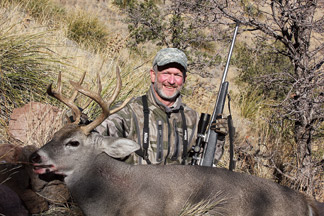
Roy even used the .257 Weatherby Magnum on one of his many African hunting trips to bag a cape buffalo. Roy used a .25-caliber 100-grain Nosler Partition bullet (I’ve been told this was his favorite load) on the beast when most hunters use larger calibers and much heavier bullets. That was how confident Roy was with the .257 Weatherby Magnum and his shooting ability, and that helped give the .257 Weatherby Magnum a reputation and appeal that continues to this day. In my mind, the .257 Weatherby Magnum is one of those few calibers that has an aura about it.
Speed Kills
Twenty-five calibers, or “quarters bores,” have been around since the late 19th century. Winchester’s .25-35 was one of the first smokeless powder sporting cartridges. The .25-36 Marlin was another along with the .25-20 Single Shot, .25-21 Stevens, and others. These were anemic cartridges that were short on power and punch and most are now obsolete.
The .25-35 Winchester is still around and it pushes a 117-grain bullet at about 2,200 fps, which elicits a yawn from me. It wasn’t until 1915 when quarter bores started to sizzle when the 250-3000 Savage or .250 Savage was introduced. This was the first commercial cartridge to break 3,000 fps. Now that has my attention.
A few years later a wildcatter named Ned Roberts developed the .257 Roberts which spit out most bullets in the 60- to 100-grain range from 3,800 to 3,100 fps. The .257 Roberts is another one of those calibers that has an aura, and for decades the .257 Roberts was at the top of the quarter bore heap since it was excellent for both varmints and deer.
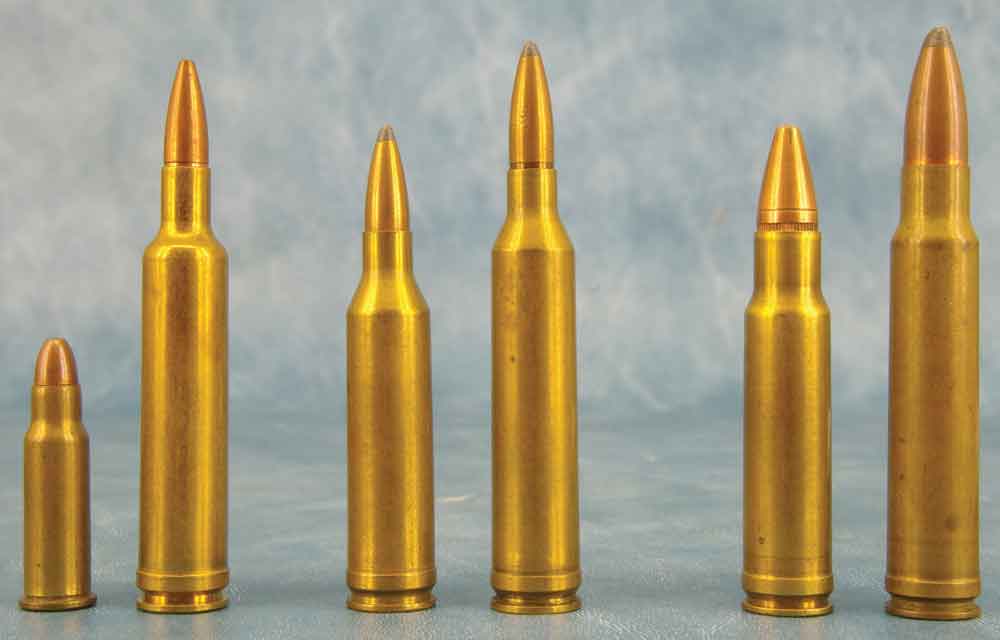
Then in 1944 another wildcatter by the name of Roy Weatherby completely rewrote the recipe on .25-caliber cartridges when he introduced the .257 Weatherby Magnum. The .257 Weatherby Magnum left all the other quarter bores choking on its dust by pushing 87-grain bullets to velocities over 3,800 fps, and heavier 100- and 120-grain bullets at 3,600 and 3,300 fps. Translate those bullets and speeds into energy and that’s 2,827 foot-pounds for the 87-grain soft point, 2,882 foot-pounds for the 100-grain soft point and 2,911 foot-pounds with the 120-grain soft point. These factory loads offer a powerful punch.
.257 Weatherby Magnum Parent Case
Weatherby designed the .257 Weatherby Magnum by shortening a .300 H&H Magnum case to 2.5 inches and necking it down to .25 caliber. The .300 H&H is a belted magnum because it uses a belted case which has a pronounced belt around the base of the case used for headspacing.
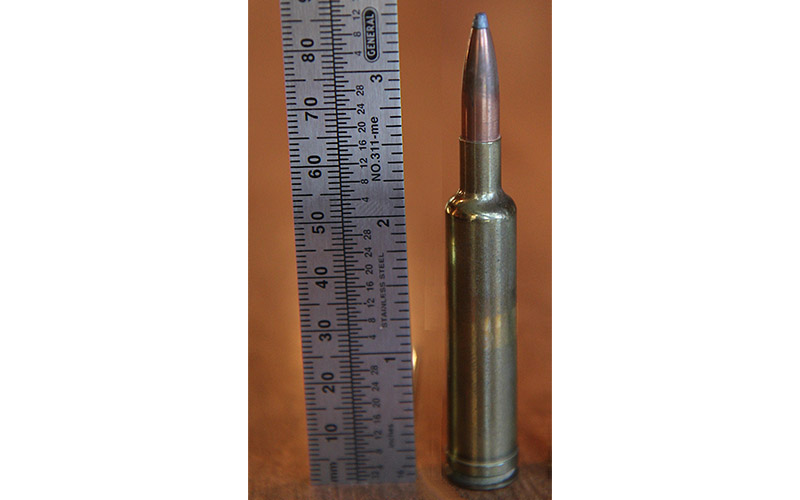
Two other Weatherby cartridges, the .270 Weatherby Magnum developed in 1943 and the 7mm Weatherby Magnum in 1940, share the same parent case. At the time when the calibers were introduced, Roy Weatherby used the slowest burning powder available which was IMR-4350. All these cartridges have a sexy-looking, double-radius shoulder which is iconic to nearly all Weatherby cartridges. The marketing myth with the double-radius shoulder was the energy from the burning propellant flowed more efficiently, but the truth is Roy Weatherby didn’t want his calibers to be easily reloaded by handloaders. That’s all since changed.

.257 Weatherby Magnum Versus Old And New Calibers
Perhaps the biggest long-time competitor to the .257 Weatherby Magnum is the .25-06 Remington. The .25-06 Remington also started out as a wildcat cartridge dating back to the 1920s. A.O. Niedner necked down a .30-06 case for a .25 caliber bullet. For years it was a wildcatter’s load until Remington started to produce it under the name .25-06 Remington in 1969. This caliber has been and continues to be popular with varmint hunters and those chasing medium game. It offers a good apples-to-apples to the .257 Weatherby Magnum. The 6.5 Creedmoor is not a quarter bore caliber but is a very popular modern caliber and it can help to provide context.
In the Shooter’s Calculator chart below, I used factory data to compare a 100-grain bullet from the .257 Weatherby Magnum with a 110-grain .25-06 Remington bullet and a 120-grain bullet from the 6.5 Creedmoor; all are zeroed at 300 yards. All three calibers perform similarly out to 400 yards, and the interesting thing is the .257 Weatherby Magnum shows it shoots flatter and drops less than either the .25-06 Remington and the 6.5 Creedmoor starting at 500 yards and farther.
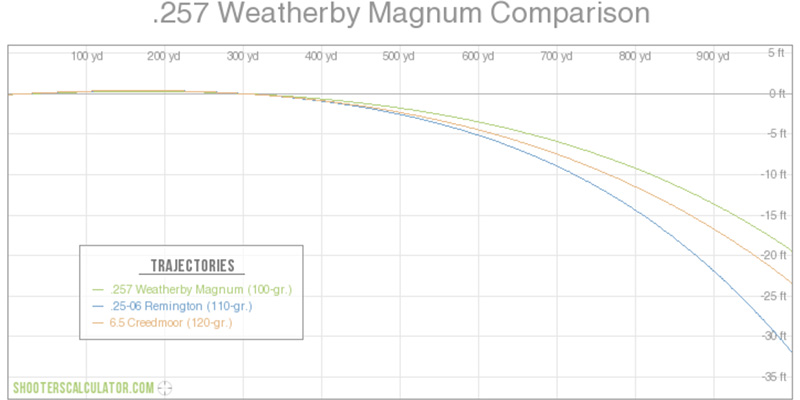
Range And Power
At 300 yards, the .257 Weatherby delivers 1,650 foot-pounds of energy compared to the .25-06 Remington at 1,572 foot-pounds and the 6.5 Creedmoor at 1,549 foot-pounds. The .257 Weatherby Magnum is a speed demon at the muzzle taking off at 3,570 fps. The .25-06 Remington generates 3,140 fps and the 6.5 Creedmoor clocks in at 3,050 fps. This all means that downrange the .257 Weatherby Magnum has more punch than either of these two calibers.
This also translates to more felt recoil in the .257 Weatherby Magnum. In my opinion, the recoil from the .257 Weatherby Magnum is similar to a .270 Winchester. Is there a downside to the .257 Weatherby Magnum? Barrel life can be shortened if you do not allow the barrel to cool down. I typically fire three rounds and let the barrel chill out. You could easily burn out a barrel shooting up a prairie dog town. I zero two inches high at 100 yards, and the .257 Weatherby is dead on at 300 yards. No guesswork involved.
Is The .257 Weatherby Magnum Useful?
As you can see with the ballistic chart comparison, a more modern caliber like 6.5 Creedmoor can do just about anything the Is the .257 Weatherby Magnum can do. So why hasn’t the .257 Weatherby Magnum been moved to the obsolete cartridges chapter in the latest edition of the Cartridges Of The World? In my opinion, it comes down to two reasons.
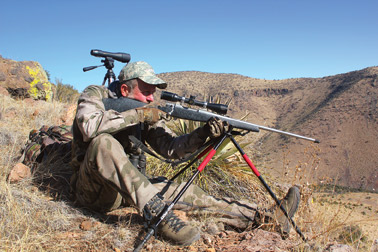
One reason is the .257 Weatherby Magnum offers excellent performance even if it was designed when tail fins were standard equipment on automobiles. The second reason is the .257 Weatherby Magnum is easy and forgiving because it shoots so flat. When zeroed in at 300 yards there is no need to compensate. Sure, the bullet is 3 inches high at 200 yards, but that still means the shot will be in the kill zone on deer and antelope. It shoots flatter than flat with no guesswork. The .257 Weatherby Magnum is simple like that. No trajectory cheat sheets taped to the stock because most of my hunting is under 400 yards. Could I push the .257 Weatherby farther? Sure, and that’s when I’ll need to compensate.
Reloading The .257 Weatherby Magnum
Knowing the twist rate on your Weatherby rifle is important. Early Weatherbys built in Germany before 1972 have a 1:12-inch twist. Don’t expect to shoot bullets larger than 100 grains with these rifles since the rifling will not stabilize heavier bullets. Newer rifles chambered in .257 Weatherby Magnum have a 1:10-inch twist rate and can stabilize 115- and 120-grain bullets.
One of the quirks with the .257 Weatherby is the amount of freebore in the chamber. A characteristic of the .257 Weatherby is the longer throat which means it is not possible to seat the bullet close to or in contact with the lands of the rifling. The best solution is to seat bullets as long as the rifle’s magazine allows, up to a 3.25-inch overall case length, and make sure they have a good crimp.
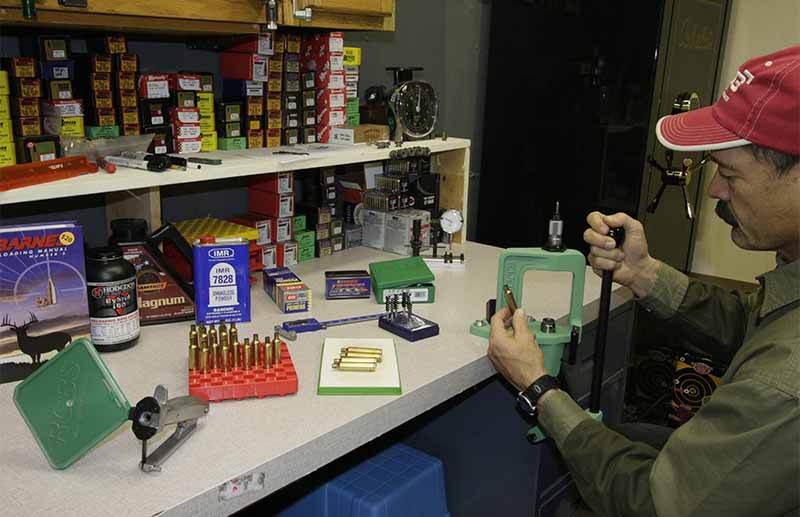
The large capacity cases and small bore size of the .257 Weatherby make it a great candidate for an overbore cartridge and as such dictates a slow burning propellent, especially for rifles with a 26-inch barrel. Alliant Reloader 25 or RL-25 is an excellent overall choice of powder for a wide range of bullet weights. If you are loading light 85-grain bullets for varmints, RL-19 and H4350 are good choices. For heavier 110-grain bullets, Hodgen IMR 4350, RL22, and H1000 are good medium- to slow-burn propellant choices.
There is a wide range of bullet choices for the .257 Weatherby. For varmints there is Barnes’ excellent TTSX 80-grain bullet, Hornady’s 75-grain V-Max and Nosler’s 85-grain Spitzer Ballistic Tip Varmint. If deer is your quarry, then there are several good 100-, 110-, 115- and 120-grain bullet options. While the .257 Weatherby is used on elk, I’d reload with a bullet that offers good penetration like Nosler’s 115-grain Partition or 100-grain lead-free E-Tip. Hornady’s 117-grain Boat Tail Spire Point is also a good choice for penetration.
.257 Weatherby Rifles
At times I think the .257 Weatherby is a well-kept secret among those of us who think reading reloading data is exciting. It gets overlooked with all the shiny new calibers available. Weatherby originally chambered the caliber in the Mark V action that features nine locking lugs. As a young hunter who could only afford bargain-brand rifles, I lusted after the Mark V Deluxe with a glossy walnut stock and steel blued so bright it almost sparkled. The Mark V Deluxe is retro-cool. The Mark V is also available in Accumark, Weathermark, Carbonmark and other models with lightweight carbon stocks with stainless steel metal and Cerakote finishes.
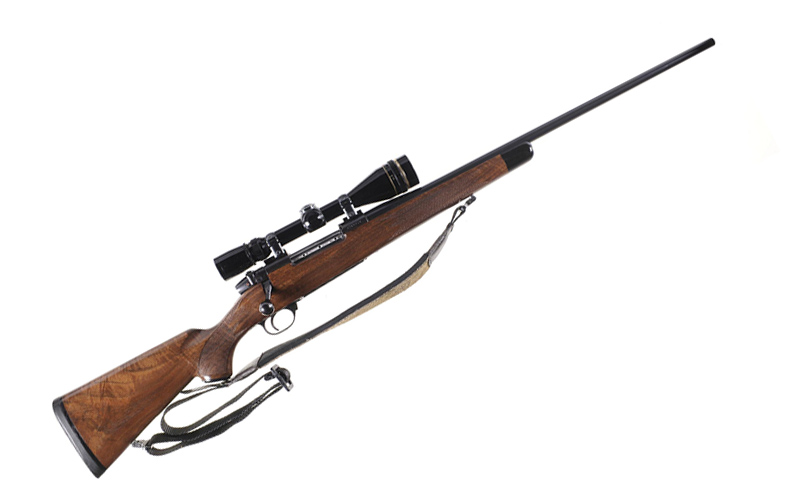
The Vanguard line of rifles from Weatherby offers all the quality Weatherby is noted for but with a two-lug action at a more modest price. I’m a fan of the Synthetic series. So is my wallet.
The newest Weatherby, the Model 307, is also a two-lug bolt with a cylindrical action that’s designed to accommodate old-school calibers as well as newer calibers in short and long actions. You can also build your own rifle, as Weatherby is offering just the action for custom builds.
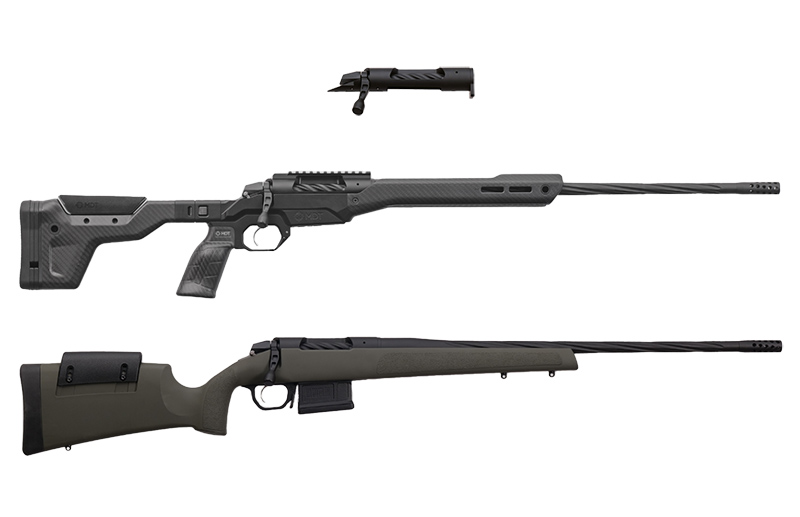
High-end European rifle maker, Blaser, offers the R8 and R93 models that are as expensive as they are elegant. Over the years, Remington chambered the .257 Weatherby in the Model 700 and custom gunmakers like Cooper Firearms have offered the .257 Weatherby as well. Custom builds with Winchester Model 70 and Ruger No.1 actions have also been mated with new barrels for the caliber.
.257 Weatherby Ammo Availability
For years, you could only buy .257 Weatherby Magnum cartridges or any of Weatherby’s calibers only from Weatherby itself. Weatherby had his cartridges produced by Norma in the early days, but today RWS does the commercial loading for Weatherby. Other ammunition manufacturers like HSM, Hornady, Nosler, and Double Tap also produce ammo. Ammo is available, but like many magnum calibers, it often causes a bit of sticker shock with a 20-round box going for about $5 to $6 per round.
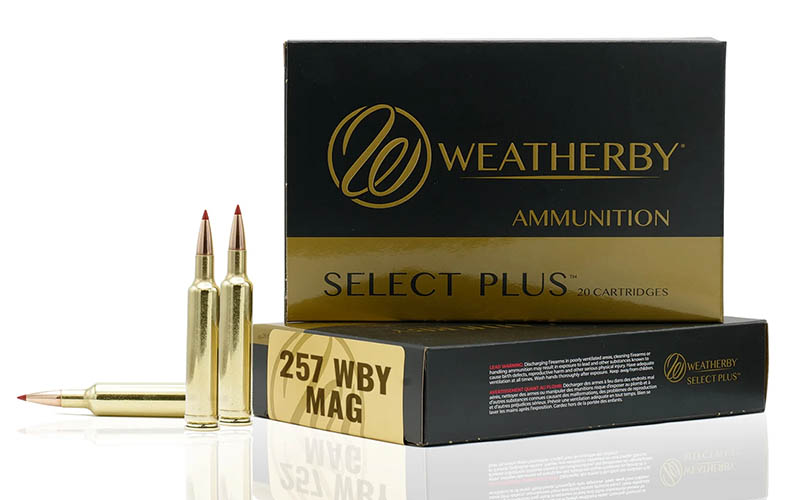
Should You Invest In A .257 Weatherby Magnum?
The .257 Weatherby is superb as a medium-game cartridge. White-tail and mule deer, sheep and antelope are its sweet spot. With lighter bullets, it’s good on varmints too. Are there any good reasons to invest in the .257 Weatherby? If you crave a flat shooting, high-velocity cartridge with mild recoil, then the .257 Weatherby should be on your shortlist, especially if you like old-school hot-rod calibers that perform.
Raise Your Ammo IQ:
- Beyond The 6.5 Creedmoor: The Other 6.5 Cartridges
- The Lonesome Story Of The Long-Lost 8mm
- Ammo Brief: .375 H&H Magnum
- .350 Legend Vs .450 Bushmaster: Does One Win Out For Hunting?

Next Step: Get your FREE Printable Target Pack
Enhance your shooting precision with our 62 MOA Targets, perfect for rifles and handguns. Crafted in collaboration with Storm Tactical for accuracy and versatility.
Subscribe to the Gun Digest email newsletter and get your downloadable target pack sent straight to your inbox. Stay updated with the latest firearms info in the industry.

![Best Concealed Carry Guns In 2025 [Field Tested] Wilson Combat EDC X9S 1](https://gundigest.com/wp-content/uploads/Wilson-Combat-EDC-X9S-1-324x160.jpg)


![Best 9mm Carbine: Affordable PCCs [Tested] Ruger Carbine Shooting](https://gundigest.com/wp-content/uploads/Ruger-Carbine-Shooting-100x70.jpg)
![Best AR-15: Top Options Available Today [Field Tested] Harrington and Richardson PSA XM177E2 feature](https://gundigest.com/wp-content/uploads/Harrington-and-Richardson-PSA-XM177E2-feature-100x70.jpg)

Nice review! And technical advice. Thank you.